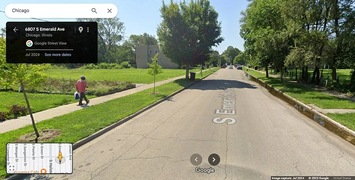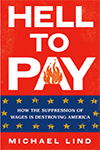
I’ve had my differences with the YIMBY (Yes In My Back Yard) movement. Over the years I’ve written multiple pieces raising a position on zoning reform that rarely gets discussed – upzoning can open up the floodgates for new housing in cities that don’t need new housing in the way that overpriced coastal cities do, and disrupt a fragile housing market equilibrium in slow-growth, less expensive cities like those in the Midwest. In fact, I raise the counterintuitive argument that zoning reform in slow-growth metros can potentially lead to higher prices and rents, as developers seize on the opportunity to appeal to the most affluent buyers and renters.
Just prior to moving the Corner Side Yard to Substack last April, I wrote a five part series offering dissents to the YIMBY movement:
Rethinking the Affordable Housing Crisis, Part 1
Rethinking the Affordable Housing Crisis, Part 2
Rethinking the Affordable Housing Crisis, Part 3
The series probably didn’t get the attention it deserved because it straddled the old platform and Substack, and my following isn’t necessarily the same as it was. Still, I encourage you to read it.
However, if you don’t read it, here’s a very brief summary. In my view, there are six conventional explanations for our housing affordability crisis:
- The post-Great Recession collapse in housing production;
- Zoning, specifically widespread single-family zoning;
- High interest rates, low inventory;
- Excessive government regulation, raising the cost of housing production;
- Household incomes haven’t kept up with housing costs; and
- A reliance on “filtering” tcreate affordable housing.
These are indeed explanations that drive the efforts of YIMBYs. But I’d argue there six less-considered, yet equally important explanations as well:
- The dramatic decrease in average household size in the last 60 years;
- The reluctance of banks tmove on from their financial models that favored single-family home development;
- General aversion tsubsidized housing;
- General aversion tthe displacement caused by gentrification; and
- A growing sense that younger, urban-oriented people “want what we want, where we want it,”; and
- Geography. There simply are physical limits to construction in some metros, and they’re costly to overcome.
I also referred to three socio-cultural causes for the housing crisis:
- Housing exuberance, when property owners have expectations of higher prices and rents even before new development increases demand;
- Segregation, in the sense that it drives down demand in portions of a metro area while driving up demand in others, pushing up costs; and
- Inventory mismatch, with a greater demand for a development type (often pre-WWII style development) that’s declining in inventory.
I concluded the last entry in the series with a comparison between Los Angeles County and Cook County, the home counties of Los Angeles and Chicago, respectively.
Read the rest of this piece at The Corner Side Yard.
Pete Saunders is a writer and researcher whose work focuses on urbanism and public policy. Pete has been the editor/publisher of the Corner Side Yard, an urbanist blog, since 2012. Pete is also an urban affairs contributor to Forbes Magazine's online platform. Pete's writings have been published widely in traditional and internet media outlets, including the feature article in the December 2018 issue of Planning Magazine. Pete has more than twenty years' experience in planning, economic development, and community development, with stops in the public, private and non-profit sectors. He lives in Chicago.
Photo: A street view looking south of the intersection of 68th and Emerald Avenue in Chicago’s Englewood neighborhood. Source: google.com.












